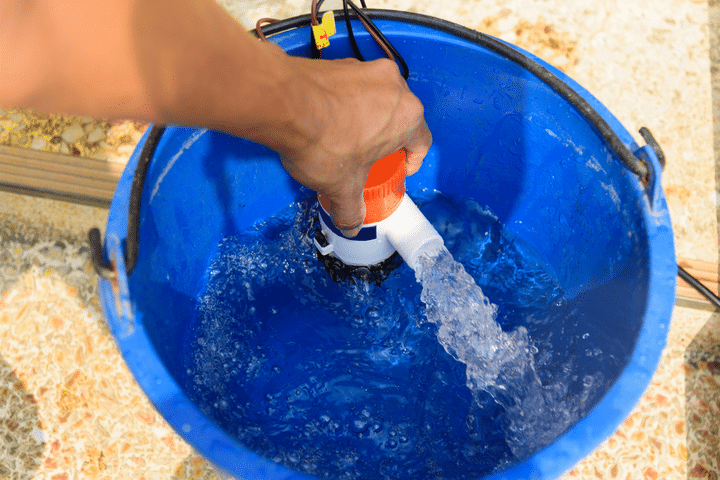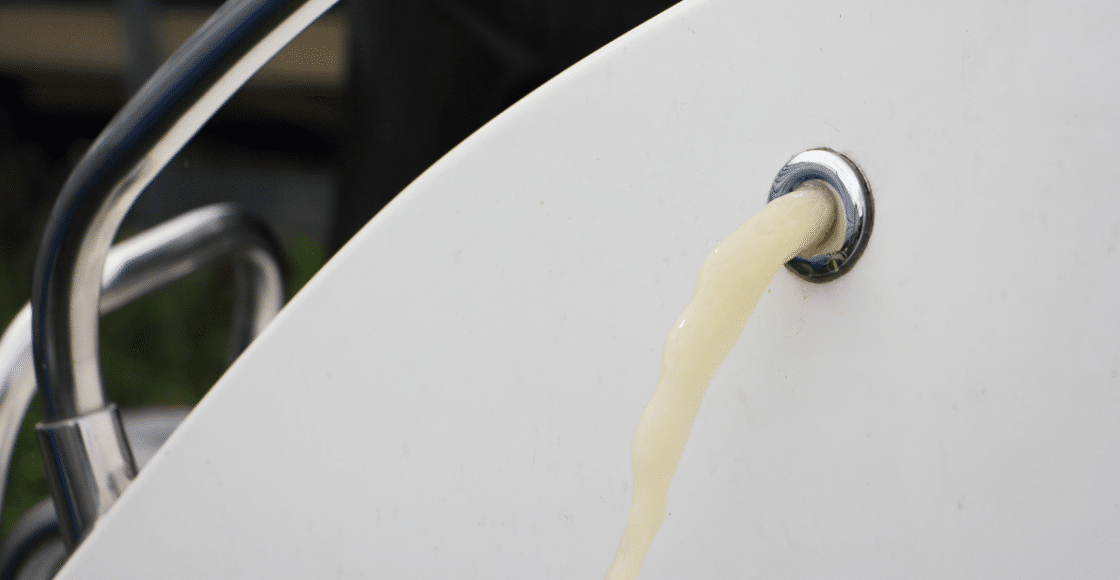What is the Bilge on a Boat
Last Updated on January 14, 2022 by Boatsetter Team
The backbone of a boat, and the lowest point, is the keel. From this point arise ribs, on which skin is fitted, and flooring on which to walk. Finally, decking is added to cover the boat’s top from the elements and form a cabin.
Below the flooring of your boat is the bilge. This area is a bit like a home’s basement, which often needs a sump pump to get rid of water that accumulates there. The same is so with the bilge of a boat. Any water, condensation, engine oil, or coolant drains down from the engine, sinks, or toilets will end up in the bilge. And that water needs to be removed. How do you do that? With a bilge pump.
What is the Bilge on a Boat?
The bilge is where all of the boat’s components, keel, ribs, bulkheads come together to give your boat its structure. It is also the lowest interior point of your craft.
Because it is the lowest point, any fluids that your boat is leaking, settle here.
How does a bilge work?
The bilge area collects any wastewater or fluids that come from the engine. It also gathers condensation that drips from inside the hull and water that leaks from sinks or toilets.
On large vessels, plumbing and electrical wiring and engine controls may be routed through the bilge area inside of the conduit. This placement helps keep everything neat, tidy, and relatively easy to access, and you will want it to remain as dry as possible.
Water in the bilge needs to be removed — enter the bilge pump.
A bilge pump sits at the lowest point of the bilge and sucks up the water, and pumps it overboard. Some bilge pumps will turn themselves on when their sensor tells them to. A bilge pump can be turned on manually from the helm of a boat or the electrical panel. It depends on how you have one set up.
The size of your bilge pump should be rated to the size of your boat. Many boats have more than one bilge pump, which is a good idea, especially on large vessels.
Do all boats need a bilge pump?
Boats that remain in the water all of the time need an automatic bilge pump. If you sail or motor very far offshore, you need a bilge pump, and if you have a boat large enough that it has sinks, toilets, and a complete water system, you may need several bilge pumps.
Other factors that are a clue you need a bilge pump are through-hull fittings. What is a through-hull fitting, you ask? It is just that.
It is a hole that has been made into the hull of your boat. It has been placed there to facilitate water coming in or going out. Through hulls have many purposes and can be for getting cooling water to the engine or going to your watermaker.
Even if there is supposed to be a hole in your boat, the fitting in that hole can fail. If it does, your boat could fill with water. Without a bilge pump on board, your vessel could potentially sink.
Why do you need a bilge pump?
Seawater weighs an average of 8.6 pounds per gallon and equates to 860 pounds if 100 gallons of water make it into the bilge of your boat. This weight could exceed the boat’s weight capacity for some boats and make it unstable. It could also sink your boat.
The engines on inboard boats are usually placed very low in a boat, right above the bilge. So, if enough water gets into your bilges, your engines could fail, and then you have another problem, entirely.
A bilge pump is a safety device, and it’s best to have two instead of one, even if the second one is a manual pump or a bucket.
Types of bilge pumps

There are several types of bilge pumps, and although they all pump water from the bilge of a boat, they go about it differently.
- Diaphragm type bilge pump – this type of bilge pump uses a membrane to pull water into the intake hose and ejects it from the boat. This type of pump uses an external filter to prevent the trash from the bilge from blocking its inlet hose.
- Centrifugal bilge pump – A centrifugal pump uses an impeller to pull water into the pump and push it over the side. It will only work if fully submerged, which is a drawback as it means water must already be present before it switches itself on.
- Piston bilge pumps – This pump is much like a diaphragm pump and can be run dry. The biggest drawback with them is they can become clogged more easily than other types of pumps.
Diaphragm and piston bilge pumps can be mounted above the bilge and push water higher than centrifugal pumps. So you won’t have to get down in the bilge with it if it needs attention, which is a big plus.
However, expect to pay more for a diaphragm bilge pump, even if it is a manual unit than for a centrifugal unit. Large vessels need high-capacity bilge pumps, and a diaphragm pump is worth consideration. For smaller boats, centrifugal bilge pumps will work well and won’t break the bank.
Cost of bilge pumps
Manual bilge pumps run about $50, and so do the least expensive centrifugal pumps. As with most things, you get what you pay for and need to consider how many gallons of water a pump will move before you buy it.
Bilge pumps are not rated by horsepower. They are rated by the number of gallons they will remove in an hour. So, a pump that is labeled 500 GPH, indicates that it will release 500 gallons of water in an hour. That may be fine for a dinghy, but for a 20 footer with a leak, it won’t get the job done.
You can purchase a 500 GPH bilge pump for around $50, but like all of your boat’s safety equipment, you shouldn’t cheap out on this item. By doubling what you spend, you can get a manual diaphragm pump that you can fit in the cockpit. Alternatively, you can get a centrifugal pump that will remove 1,500 gallons of water an hour instead of 500.
Many bilge pumps are started manually. Even if they have power running to them, they need you to hit a switch to turn them on. Unlike a manual bilge pump, an automatic bilge pump can sense when it needs to come on via a float switch. A pump with this feature will cost you a few more dollars for either type of pump.
Boat maintenance is expensive and necessary.
If you want a reliable boat that doesn’t leave you stranded in the middle of the lake, then proper maintenance is necessary. It can be expensive unless you can do it yourself, but either way, it has to be done if you want to have the best boating experience possible.
A boat’s systems are not complicated, but neglect can render them inoperable, often at the worst possible time. For example, a boat with a bilge full of water is never a good thing, but not having a fast way to get it out of the boat is worse.
Let us help you pay for the maintenance of your boat.
Boat owners across the United States, the Caribbean, and the Mediterranean are listing their boats on Boatsetter.com. Boat owners love their boats, and the cost of keeping them goes even higher. Offsetting these expenses is easy with Boatsetter.
You have the option to rent just your boat, or you can rent your boat and captain it, too. Do you want to get paid to do what you love? Contact us at boatsetter.com and see how we can help you offset the maintenance costs associated with your boat.

Boatsetter empowers people to explore with confidence by showing them a world of possibility on the water. Rent a boat, list your boat, or become a Boatsetter captain today.










